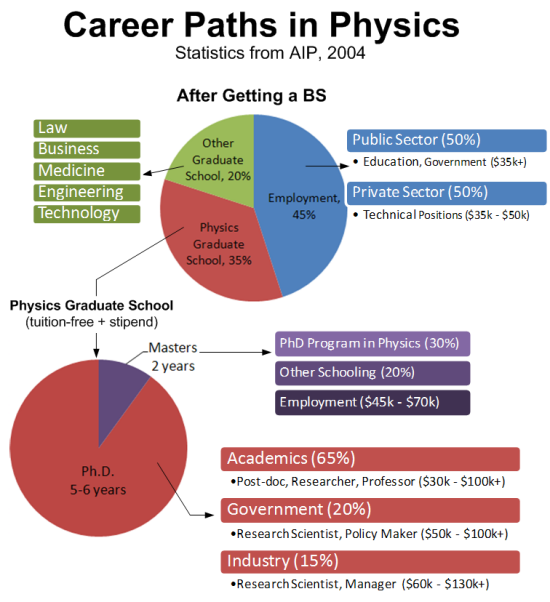Careers in Physics and Astronomy
Careers in Physics range widely and include:
- Industry technical positions
- Research and Development at Universities and Government Labs
- Instructor positions at Colleges and High Schools
Careers in Astronomy and Space Science range widely and include:
- Conducting observations to study how stars and planet form
- Designing and building satellites to search for planets around other stars or to visit planets in our own solar system
- Taking and interpreting observations of distant exploding stars to determine the age and fate of the universe
- Developing models of orbiting black holes and neutron stars spiraling into each other to explain gamma ray bursts Teaching middle or high school:
Teaching middle or high school:
-
Interested in teaching physics or general science in middle or high school? Please contact the science teaching advisor Dr. Paul Beardsley (pmbeardsley@cpp.edu) to learn how to prepare. Also, learn about financial support at CPP’s Center for Excellence in Mathematics and Science Teaching.
